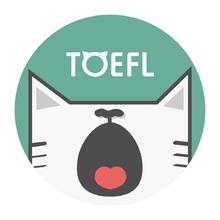 返回
教育头条
返回
教育头条

托福阅读考试原文及题目分享
在备考的过程中,考生一般都会拿TPO来进行托福考试的练习。因为其涵盖了大量托福考试的题型,能够帮助考生快速了解各类题型,从而更有针对性攻克自己的短板。今天小编为大家整理了托福阅读Predator-Prey Cycles原文及题目,一起来了解一下吧!
Predator-Prey Cycles
How do predators affect populations of the prey animals? The answer is not as simple as what might be thought. Moose reached Isle Royale in Lake Superior by crossing over winter ice and multiplied freely there in isolation without predators. When wolves later reached the island, naturalists widely assumed that the wolves would play a key role in controlling the moose population. Careful studies have demonstrated, however, that this is not the case. The wolves eat mostly old or diseased animals that would not survive long anyway. In general, the moose population is controlled by food availability, disease, and other factors rather than by wolves.
When experimental populations are set up under simple laboratory conditions, the predator often exterminates its prey and then becomes extinct itself, having nothing left to eat. However, if safe areas like those prey animals have in the wild are provided, the prey population drops to low levels but not to extinction. Low prey population levels then provide inadequate food for the predators, causing the predator population to decrease. When this occurs, the prey population can rebound. In this situation the predator and prey populations may continue in this cyclical pattern for some time.
Population cycles are characteristic of small mammals, and they sometimes appear to be brought about by predators. Ecologists studying hare populations have found that the North American snowshoe hare follows a roughly ten-year cycle. Its numbers fall tenfold to thirty in a typical cycle, and a hundredfold change can occur. Two factors appear to be generating the cycle: food plants and predators.
The preferred foods of snowshoe hares are willow and birch twigs. As hare density increases, the quantity of these twigs decreases, forcing the hares to feed on low-quality, high-fiber food. Lower birth rates, low juvenile survivorship, and low growth rates follow, so there is a corresponding decline in hare abundance. Once the hare population has declined, it takes two to three years for the quantity of twigs to recover.
A key predator of the snowshoe hare is the Canada lynx. The Canada lynx shows a ten-year cycle of abundance that parallels the abundance cycle of hares. As hare numbers fall, so do lynx numbers, as their food supply depleted.
What causes the predator-prey oscillations? Do increasing numbers of hares lead to overharvesting of plants, which in turn results in reduced hare populations, or do increasing numbers of lynx lead to overharvesting of hares? Field experiments carried out by Charles Krebs and coworkers in 1992 provide an answer. Krebs investigated experimental plots in Canada’s Yukon territory that contained hare populations. When food was added to these plots (no food effect) and predators were excluded (no predator effect) from an experimental area, hare numbers increased tenfold and stayed there—the cycle was lost. However, the cycle was retained if either of the factors was allowed to operate alone: if predators were excluded but food was not added (food effect alone), or if food was added in the presence of predators (predator effect alone). Thus, both factors can affect the cycle, which, in practice, seems to be generated by the conjunction of the two factors.
Predators are an essential factor in maintaining communities that are rich and diverse in species. Without predators, the species that is the best compe for food, shelter, nesting sites, and other environmental resources tends to dominate and exclude the species with which it competes. This phenomenon is known as “compe exclusion.” However, if the community contains a predator of the strongest compe species, then the population of that compe is controlled. Thus even the less competitive species are able to survive. For example, sea stars prey on a variety of bivalve mollusks and prevent these bivalves from monopolizing habitats on the sea floor. This opens up space for many other organisms. When sea stars are removed, species diversity falls sharply. Therefore, from the standpoint of diversity, it is usually a mistake to eliminate a major predator from a community.
考试题目:
Q1 In paragraph 1, why does the author discuss the moose and wolves on Isle Royale?
A. To provide an example of predators moving to new habitats by following migrating prey B. To show that the interactions between predator populations and prey populations are not always what might be expected C. To suggest that prey populations are more influenced by predation than food availability and disease D. To argue that studies of geographically isolated populations tend not to be useful to naturalists
Q2 The word “rebound” in the passage is closest in meaning to
A. escape B. recover C. survive D. resist
Q3 Paragraph 2 implies which of the following about experimental environments in which predators become extinct?
A. They may yield results that do not accurately predict changes of populations in the wild. B. In these environments, the prey species is better adapted than the predator species. C. These environments are appropriate only for studying small populations of predators and prey. D. They are unrealistic because some predators are also the prey of other predators.
Q4 Which of the following can be inferred from paragraphs 2 and 3 about the small mammals that experience population cycles?
A. Their population cycles are not affected by predators. B. Their predators’ populations periodically disappear. C. They typically undergo ten-year cycles. D. They have access to places safe from predators.
Q5 The word “roughly” in the passage is closest in meaning to
A. usually B. repeating C. approximately D. observable
Q6 The word “generating” in the passage is closest in meaning to
A. producing B. changing C. speeding up D. smoothing out
Q7 According to paragraph 4, all of the following are true of the food of snowshoe hares EXCEPT:
A. The preferred food for hares consists of willow and birch twigs. B. High fiber food is the most nutritious for hares. C. Depletion of the supply of willow and birch twigs causes low birth and growth rates. D. The food supply takes two or three years to recover after a peak in hare population density.
Q9 The word “conjunction” in the passage is closest in meaning to
A. determination B. combination C. alternation D. transformation

Q10 According to paragraph 6, which of the following was true of the hare population cycle in Krebs’s experiment?
A. The effects of providing food while at the same time introducing predators cancelled each other, so there was no cycle. B. The cycle existed when either the food supply was limited or there were predators. C. There was a cycle when there were no predators and food was supplied. D. If the hares had places to hide from the lynx, the hare population increased tenfold and then remained at that level.
Q12 According to paragraph 7, which of the following is true of the phenomenon of compe exclusion?
A. It results in more diverse communities. B. It requires the presence of predators. C. It affects all compes equally. D. It happens only when there is a dominant compe.
Q13 Look at the four squaresthat indicate where the following sentence could be added to the passage.
As a result, there are not enough of the strong compes to monopolize the environment’s resources. Where would the sentence best fit? Click on a square to add the sentence to the passage.
Q14 Directions: An introductory sentence for a brief summary of the passage is provided below.
Complete the summary by selecting the THREE answer choices that express the most important ideas in the passage. Some sentences do not belong in the summary because they express ideas that are not presented in the passage or are minor ideas in the passage. This question is worth 2 points.
Drag your answer choices to the spaces where they belong. To remove an answer choice, click on it. To review the passage, click VIEW NEXT.
The relationships between predators and prey are complex.
A. Studies of the interactions between wolves and moose on Isle Royale in Lake Superior reveal that wolf predation is not the primary factor controlling the moose population. B. Ecologists are interested in studying predator prey population cycles because understanding how predators and prey interact will allow better wildlife management programs. C. Predators help maintain biological diversity by limiting populations of a dominant compe species, thereby preventing that species from excluding others. D. In predator-prey population cycles, predator populations increase or decrease following similar population changes in the species they prey on. E. A species’ population tends to rise and falls in a cycle pattern if the food supply for the population is limited, or if the population has a major predator. F. The removal of sea stars reduces the diversity of the community in which they are predators, and is therefore a bad idea.
Predator-Prey Cycles
How do predators affect populations of the prey animals? The answer is not as simple as what might be thought. Moose reached Isle Royale in Lake Superior by crossing over winter ice and multiplied freely there in isolation without predators. When wolves later reached the island, naturalists widely assumed that the wolves would play a key role in controlling the moose population. Careful studies have demonstrated, however, that this is not the case. The wolves eat mostly old or diseased animals that would not survive long anyway. In general, the moose population is controlled by food availability, disease, and other factors rather than by wolves.
When experimental populations are set up under simple laboratory conditions, the predator often exterminates its prey and then becomes extinct itself, having nothing left to eat. However, if safe areas like those prey animals have in the wild are provided, the prey population drops to low levels but not to extinction. Low prey population levels then provide inadequate food for the predators, causing the predator population to decrease. When this occurs, the prey population can rebound. In this situation the predator and prey populations may continue in this cyclical pattern for some time.
Population cycles are characteristic of small mammals, and they sometimes appear to be brought about by predators. Ecologists studying hare populations have found that the North American snowshoe hare follows a roughly ten-year cycle. Its numbers fall tenfold to thirty in a typical cycle, and a hundredfold change can occur. Two factors appear to be generating the cycle: food plants and predators.
The preferred foods of snowshoe hares are willow and birch twigs. As hare density increases, the quantity of these twigs decreases, forcing the hares to feed on low-quality, high-fiber food. Lower birth rates, low juvenile survivorship, and low growth rates follow, so there is a corresponding decline in hare abundance. Once the hare population has declined, it takes two to three years for the quantity of twigs to recover.
A key predator of the snowshoe hare is the Canada lynx. The Canada lynx shows a ten-year cycle of abundance that parallels the abundance cycle of hares. As hare numbers fall, so do lynx numbers, as their food supply depleted.
What causes the predator-prey oscillations? Do increasing numbers of hares lead to overharvesting of plants, which in turn results in reduced hare populations, or do increasing numbers of lynx lead to overharvesting of hares? Field experiments carried out by Charles Krebs and coworkers in 1992 provide an answer. Krebs investigated experimental plots in Canada’s Yukon territory that contained hare populations. When food was added to these plots (no food effect) and predators were excluded (no predator effect) from an experimental area, hare numbers increased tenfold and stayed there—the cycle was lost. However, the cycle was retained if either of the factors was allowed to operate alone: if predators were excluded but food was not added (food effect alone), or if food was added in the presence of predators (predator effect alone). Thus, both factors can affect the cycle, which, in practice, seems to be generated by the conjunction of the two factors.
Predators are an essential factor in maintaining communities that are rich and diverse in species. Without predators, the species that is the best compe for food, shelter, nesting sites, and other environmental resources tends to dominate and exclude the species with which it competes. This phenomenon is known as “compe exclusion.” However, if the community contains a predator of the strongest compe species, then the population of that compe is controlled. Thus even the less competitive species are able to survive. For example, sea stars prey on a variety of bivalve mollusks and prevent these bivalves from monopolizing habitats on the sea floor. This opens up space for many other organisms. When sea stars are removed, species diversity falls sharply. Therefore, from the standpoint of diversity, it is usually a mistake to eliminate a major predator from a community.
考试题目:
Q1 In paragraph 1, why does the author discuss the moose and wolves on Isle Royale?
A. To provide an example of predators moving to new habitats by following migrating prey B. To show that the interactions between predator populations and prey populations are not always what might be expected C. To suggest that prey populations are more influenced by predation than food availability and disease D. To argue that studies of geographically isolated populations tend not to be useful to naturalists
Q2 The word “rebound” in the passage is closest in meaning to
A. escape B. recover C. survive D. resist
Q3 Paragraph 2 implies which of the following about experimental environments in which predators become extinct?
A. They may yield results that do not accurately predict changes of populations in the wild. B. In these environments, the prey species is better adapted than the predator species. C. These environments are appropriate only for studying small populations of predators and prey. D. They are unrealistic because some predators are also the prey of other predators.
Q4 Which of the following can be inferred from paragraphs 2 and 3 about the small mammals that experience population cycles?
A. Their population cycles are not affected by predators. B. Their predators’ populations periodically disappear. C. They typically undergo ten-year cycles. D. They have access to places safe from predators.
Q5 The word “roughly” in the passage is closest in meaning to
A. usually B. repeating C. approximately D. observable
Q6 The word “generating” in the passage is closest in meaning to
A. producing B. changing C. speeding up D. smoothing out
Q7 According to paragraph 4, all of the following are true of the food of snowshoe hares EXCEPT:
A. The preferred food for hares consists of willow and birch twigs. B. High fiber food is the most nutritious for hares. C. Depletion of the supply of willow and birch twigs causes low birth and growth rates. D. The food supply takes two or three years to recover after a peak in hare population density.
Q9 The word “conjunction” in the passage is closest in meaning to
A. determination B. combination C. alternation D. transformation

Q10 According to paragraph 6, which of the following was true of the hare population cycle in Krebs’s experiment?
A. The effects of providing food while at the same time introducing predators cancelled each other, so there was no cycle. B. The cycle existed when either the food supply was limited or there were predators. C. There was a cycle when there were no predators and food was supplied. D. If the hares had places to hide from the lynx, the hare population increased tenfold and then remained at that level.
Q12 According to paragraph 7, which of the following is true of the phenomenon of compe exclusion?
A. It results in more diverse communities. B. It requires the presence of predators. C. It affects all compes equally. D. It happens only when there is a dominant compe.
Q13 Look at the four squaresthat indicate where the following sentence could be added to the passage.
As a result, there are not enough of the strong compes to monopolize the environment’s resources. Where would the sentence best fit? Click on a square to add the sentence to the passage.
Q14 Directions: An introductory sentence for a brief summary of the passage is provided below.
Complete the summary by selecting the THREE answer choices that express the most important ideas in the passage. Some sentences do not belong in the summary because they express ideas that are not presented in the passage or are minor ideas in the passage. This question is worth 2 points.
Drag your answer choices to the spaces where they belong. To remove an answer choice, click on it. To review the passage, click VIEW NEXT.
The relationships between predators and prey are complex.
A. Studies of the interactions between wolves and moose on Isle Royale in Lake Superior reveal that wolf predation is not the primary factor controlling the moose population. B. Ecologists are interested in studying predator prey population cycles because understanding how predators and prey interact will allow better wildlife management programs. C. Predators help maintain biological diversity by limiting populations of a dominant compe species, thereby preventing that species from excluding others. D. In predator-prey population cycles, predator populations increase or decrease following similar population changes in the species they prey on. E. A species’ population tends to rise and falls in a cycle pattern if the food supply for the population is limited, or if the population has a major predator. F. The removal of sea stars reduces the diversity of the community in which they are predators, and is therefore a bad idea.
以上就是教育宝头条带来的托福阅读考试原文及题目分享详细介绍,想要查看更多托福资讯,敬请关注教育宝头条,也可以加我微信18560125702,我会解答你的学习问题。返回教育宝头条
【免责声明】本文仅代表作者本人观点,与教育宝无关。教育宝对文中陈述、观点判断保持中立,不对所包含内容的准确性、可靠性或完整性提供任何保证。请读者仅作参考,特此声明!





